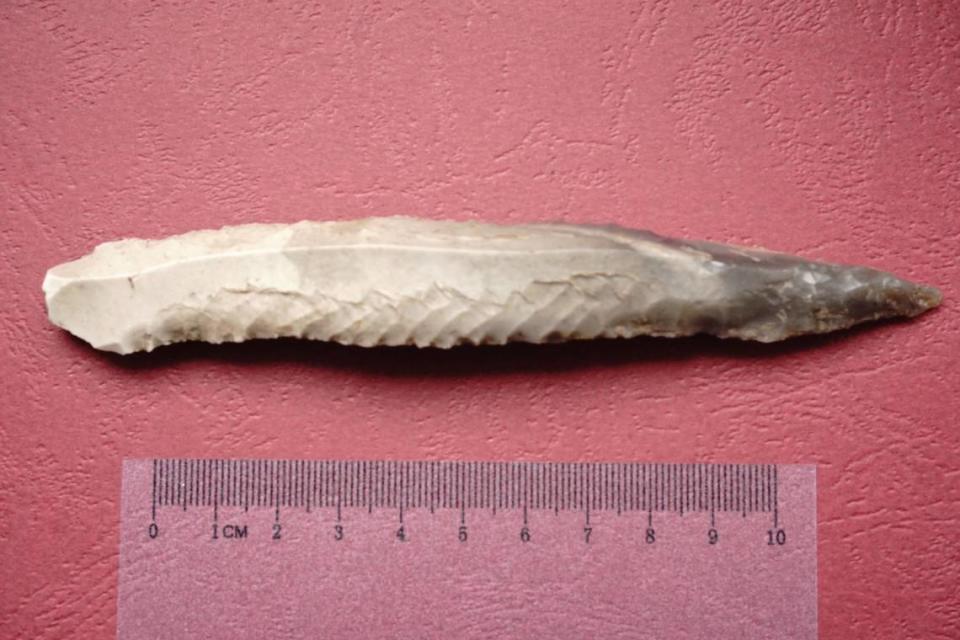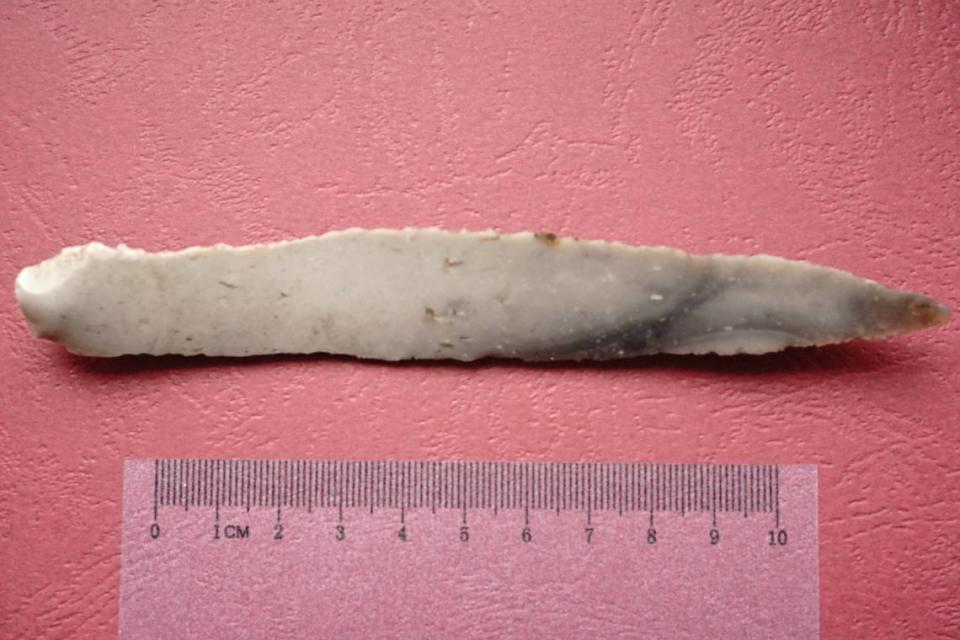Man picks up sharp stone — and finds 5,600-year-old artifact in Poland, photos show
As every parent who’s ever emptied their child’s pockets knows, picking up cool rocks is a hard-to-resist urge.
Karol Czerwiński likely felt a similar urge while walking on a hill near a river in Drażgów, Poland. He picked up a sharp stone — and discovered an ancient artifact, the Lublin Provincial Conservator of Monuments wrote in an April 8 Facebook post.
Archaeologists identified the carved stone as a bladed dagger from at least 5,600 years ago.
Photos show the roughly 5-inch-long dagger. It has an ombré of brown tones, shifting from a light tan at the blunt end to a darker brown at its point. One edge of the stone appears almost ribbed. The underside of the dagger looks smooth.

Uncover more archaeological finds
What are we learning about the past? Here are three of our most eye-catching archaeology stories from the past week.
→ Roman helmet looked like a 'rusty bucket' when it was found in UK. Now, it's restored
→Elaborate 600-year-old castle — complete with moat — unearthed in France. Take a look
→ Mysterious wooden train car — almost 100 years old — unearthed in Belgium, photos show
The 5,600-year-old flint dagger was linked to a Neolithic community known as the Lublin-Volhynia culture, officials said. This community thrived in modern-day southeastern Poland between 4100 B.C. and 3650 B.C.
Based on its quality, archaeologists believe the dagger belonged to a high-status person. Its functional purpose remains unknown.
In the Lublin-Volhynia culture, bladed daggers also served a symbolic purpose, archaeologists said. These daggers would be placed in graves, with their arrangement and quality signifying the status of the deceased.

Czerwiński gave officials the 5,600-year-old dagger, which will be analyzed further in hopes of identifying its function. It will then be given to the National Museum in Lublin.
Drażgów is about an 80-mile drive southeast of Warsaw and in the Lublin region.
Google Translate was used to translate the Facebook post from the Lublin Provincial Conservator of Monuments.
Divers remove ancient Roman cargo from shipwreck — and find unique carvings. See them
Centuries-old shipwreck — with trove of coins — unburied from dry land in Malaysia
Rare 800-year-old silver artifacts found at church in Sweden — and spark a mystery

